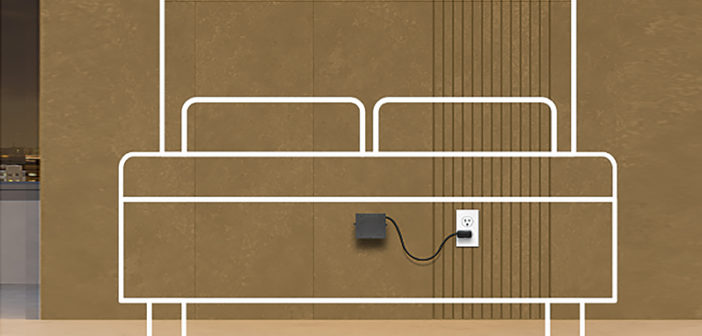NATIONAL REPORT—While bed bugs are always a threat, they don’t need to be a lengthy or difficult problem to solve. With early detection, proper training and evolving prevention methods, squashing bed bugs is not an insurmountable task.
“Hotels can prevent bed bug infestations, but they can’t prevent bed bug introductions because bed bugs are brought in by unsuspecting guests—usually one or two at a time,” said Al Safarikas, chief marketing officer, Delta Five Systems. “Bed bug infestations do not just happen—they grow. The key to preventing bed bug infestations and guest encounters is early detection.”
According to Safarikas, the problem is not only catching bed bugs too late, but management’s lack of knowledge on the subject as a whole.
“They keep doing the same two things they have always done,” Safarikas said.
This includes quick inspections that overlook bugs, and time-lagged professional inspections that check a subset of the total rooms at any one time.
He also noted that bed bugs can grow tolerant to insecticides, or these chemicals simply aren’t persistent enough.
“Powder forms of treatment, which can be more persistent‚ are removed with daily cleaning, and their presence, if found by a guest are, to say the least, undesirable,” Safarikas said.
Delta Five employs technology to safely detect bed bugs before the problem manifests. The Delta Five eLure is an electronic lure that monitors guestrooms to attract and trap bugs. If found, notifications are sent via text or email to employees. Additionally, the cloud-based system allows employees to easily track bed bug trends.
Safarikas said the future is all about Integrated Pest Management (IPM), utilizing these AI and IoT technologies.
“The same technology that enables facial recognition in a smartphone to ensure access only by an authorized user can be used to detect and identify even a single pest,” Safarikas said. “Internet communications enable immediate notification, and appropriate action can be taken to avoid problems. Technology will find the pest before the pest can find a guest.”
These types of technologies can make up for quick inspections by housekeeping staff. But, while the future may make operations more efficient and make inspections more thorough, staff should still be properly trained and engaged throughout the process.
According to Eric Braun, board-certified entomologist/bed bug line of business manager, Rentokil Steritech, in a 2017 survey of 1,000 hotel decision-makers, Rentokil found that 47% of properties conduct general pest control training internally and 44% of bed bug training internally; and 22% don’t offer training at all or just mandate that employees follow a pre-established protocol.
“Many hotels assume that because they haven’t had a bed bug complaint, they don’t have a bed bug problem,” Braun said. “But bed bugs are secretive pests—they hide in the smallest of cracks and crevices, out of sight from people in most low-level infestations. That’s why a periodic inspection program is so important.”
Braun also noted that many properties don’t leverage their pest management providers to assist with training, which can be a major help in training all employees. And, all employees should undergo training—not just housekeeping staff—as bed bugs can appear in other areas of hotels like lobbies, especially those with seating, lounge areas, breakfast or dining areas, business offices and gyms.
“This ensures that your employees are getting up-to-date information on bed bugs. Additionally, your pest management provider is likely familiar with your property and may be able to address your unique needs,” Braun said.
These programs can help and should be in place—but the human eye only goes so far, Safarikas noted.
“It’s important to state and understand that what hoteliers are doing is searching for the presence of a single bed bug—that’s not easy,” Safarikas said. “Yes, housekeeping should be engaged, other hotel staff should be engaged and so should professional pest management. With the help of advanced technology, they can succeed in stopping bed bugs before infestation rather than treating afterward.”
Technology can also be the healthier option, too. “More and more hoteliers are offering, and guests are demanding, a cleaner and more natural stay with hypoallergenic rooms and organic bedding, linens and other amenities,” Safarikas said.
Aside from the health concerns associated with these chemicals, bed bug inspection following by guessing is not only antiquated but inconclusive.
“Instead of suspicion, a solution exists that will provide photographic evidence of a bed bug in visible light and infrared; it will safely trap the bug. That is conclusive evidence,” Safarikas said.
Technology may give a way to provide evidence of bed bugs, but what happens after is up to the properties.
“There are products on the market that use technology to detect bed bugs and aid the inspection process, but nothing that kills bed bugs,” said Joseph Latino, president, Allergy Technologies LLC, manufacturer of ActiveGuard Mattress Liners. “The fact of the matter is bed bug remediation is still a very cost- and labor-intensive process. As hoteliers are beginning to understand the ‘all-in cost’ for bed bug occurrences, they are realizing the benefits of bed bug prevention versus treatment.”
According to Latino, a common mistake hotels make is underestimating the cost of bed bugs infestations and treating the problem instead of preventing it. “While it [bed bug prevention]is often deemed too expensive, it shouldn’t be, when you consider the ‘true cost’ of an infestation,” he said.
In a recent poll, Latino said, general managers and senior hotel management approximated the expense at $1,000 per bed bug incident, but according to a 2017 report from Orkin, hotels spend on average $6,383 per incident.
Many expenses are left out of the equation as management fails to add these up. Additional expenses can include loss of room revenue during treatment times, loss of staff time, compensating guests and paying for damaged goods.
“Only when hoteliers realize the ‘true cost’ of bed bugs can they appreciate the value of prevention,” Latino said. “Average-sized hotels save between 50-65% of their direct remediation costs when a preventive strategy is implemented first. Scaling up to a large convention-sized property, a hotel enjoyed savings of nearly $500,000 per year as a result of adopting prevention.”
Whether hotels employ technology or not in the bed bug fight, one component that rings true is that prevention methods and processes are ever-changing and can help save time and costs for hotels.
“Properties shouldn’t assume that a bed bug protocol established several years ago is still adequately meeting their needs,” Braun said. “Pest control continues to evolve, and we are continually evolving our methods for fighting bed bugs.” HB


